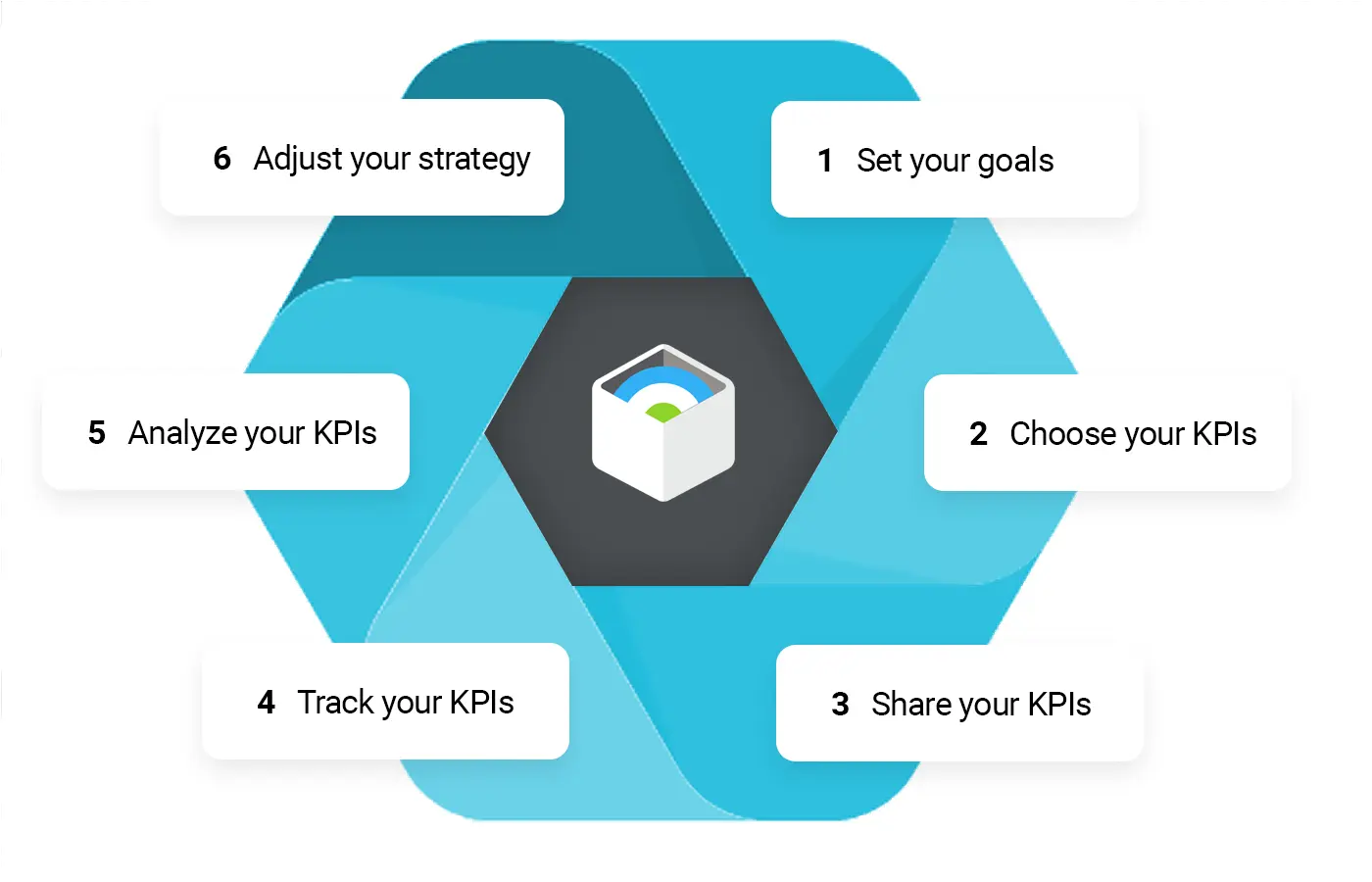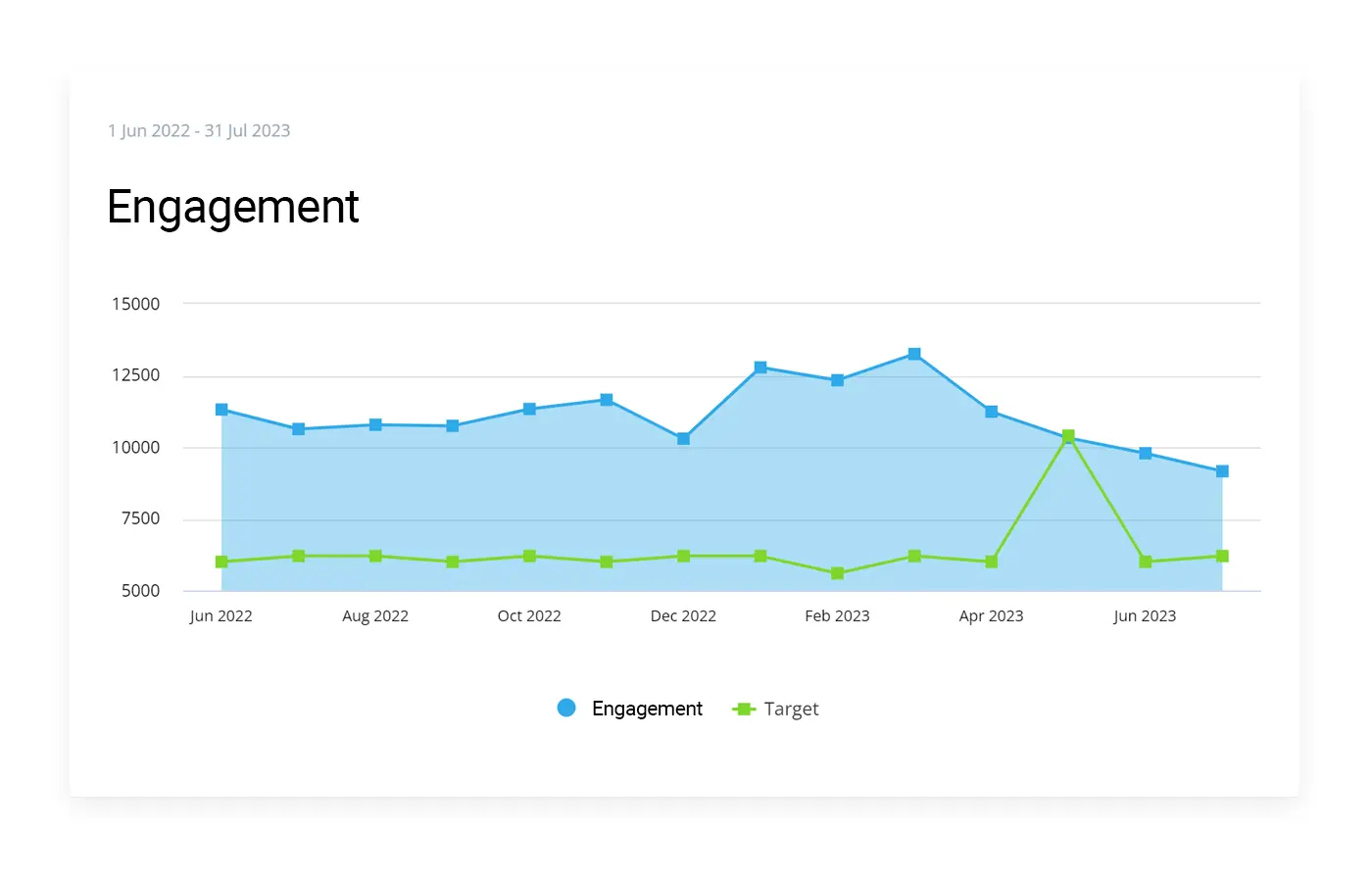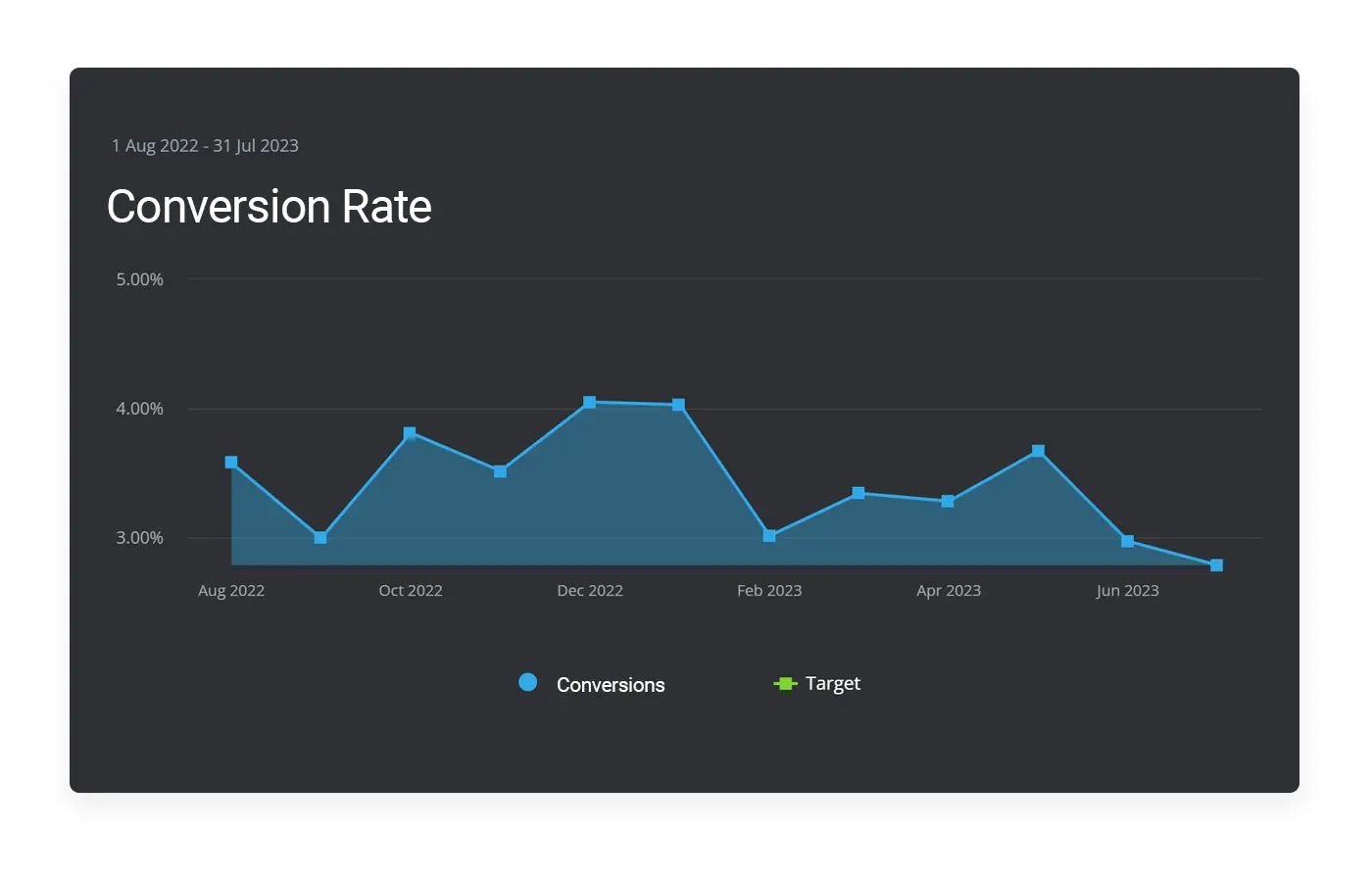In this article:
- Introduction
- Why is social media so crucial in brand awareness for businesses?
- So many KPIs, but what are they for?
- KPIs for measuring social media effectiveness
- Which Social Media KPIs should I Track?
- Conclusion
Introduction
You've got a great product, a striking logo, and a catchy slogan. But how do you get people to notice you on social media? How do you ensure your posts aren't lost in the sea of cat videos and memes? How do you measure your success online? This post will show you some of the most useful social media KPIs (key performance indicators) that can help you answer these questions. These KPIs cover the four main aspects of Social Media KPI Tracking, which tell you how much people like, share, and see your posts. We will also give you some handy advice on using these KPIs to make your social media campaigns more effective and fun.
Why is social media so crucial in brand awareness for businesses?
Brand awareness is how well people know and remember your brand, products, or services. It's what makes them trust you, like you, and buy from you. And social media is one of the best ways to make people aware of your brand without spending a fortune. Social media lets you reach millions of potential customers, show them who you are, and chat with them. It also allows you to make and share brilliant content that grabs their attention, teaches them something, makes them laugh, and inspires them.
But don't think you can just chuck anything on social media and expect people to flock to your brand. You need a cunning plan matching your ambitions, customers, and channels. You need some numbers to tell you how well you're doing and how to do better. You need some KPIs.
So many KPIs, but what are they for?
With so many social media KPIs available, it's easier to categorize them by their overall functions: reach, engagement, conversions, and customer loyalty. Each category tells you something different about how your brand is performing against what you are trying to achieve as part of an overall Social Media strategy.
-
Reach
This category tells you how many people see your social media posts. It includes things like followers, impressions, and reach. These KPIs help you know how big and awesome your audience is.
-
Engagement
Track how much people like, comment, and share your social media posts. It includes likes, comments, shares, mentions, and clicks. These KPIs help you know how good and interesting your posts are.
-
Conversions
Discover how many people are buying your stuff or signing up for your services after seeing your posts on social media. It includes leads, sales, sign-ups, downloads, and referrals. These KPIs help you know how much money and value you're making from social media.
-
Customer Loyalty
Find out how much people love your brand and want to tell their friends about it on social media. It includes retention rate, churn rate, customer satisfaction, and net promoter score. These KPIs help you know how strong and lasting your customer relationship is.
KPIs for measuring social media effectiveness
Businesses can use these KPI types to measure the effectiveness of their social media campaigns by following these steps:
- Determine your goals: The purpose of your campaign can help you decide which KPIs allow you to monitor progress toward your goals. For example, if your goal is to increase brand awareness, you might use reach and impressions as KPIs. If you aim to increase customer loyalty, you might use engagement rate as a KPI.
- Choose your KPIs: Once you've established goals for your campaign, you can choose KPIs that reflect them. You should also consider the platforms you use, your resources, and the benchmarks you want to compare.
- Share your KPIs: Tell your marketing team your goals for your campaign and the KPIs you chose. This will help them align their efforts and expectations with your strategy.
- Track your KPIs: Use tools and analytics to measure your KPIs regularly. You can use native tools like Facebook Insights or Twitter Analytics or third-party tools like Hootsuite or Sprout Social.
- Analyze your KPIs: Compare your KPIs with your goals and benchmarks. See what is working well and what needs improvement. Identify the factors influencing your KPIs, such as content quality, posting frequency, audience demographics, etc.
- Adjust your strategy: Looking at your analysis, make small changes to your strategy to optimize your results. You can test different variables, such as content types, formats, tones, hashtags, etc. You can also experiment with new platforms or tactics to reach new audiences or goals.

Which Social Media KPIs should I Track?
The trick is, don't go mad with the KPIs. You don't need a million of them. Pick a few that matter for each category and see if your campaigns are doing what they're supposed to do. A good bunch of KPIs to start with might look something like this:
Reach KPIs
3 Reach social media KPIs:
- Impressions: This KPI measures the number of times your profile, or a post has been seen on a specific social media channel. It does not distinguish how many unique accounts have viewed your content.
- Follower numbers: This KPI measures the number of people who have chosen to follow your account on a specific social media channel. It indicates how big and loyal your audience is.
- Audience growth rate: This KPI measures the percentage of change in your follower count over a period of time. It shows how fast your audience is growing or shrinking.
Engagement KPIs
3 social media Engagement KPIs:
- Likes: This KPI measures the number of times your post has received a positive reaction from your audience, such as a thumbs up, a heart, or a smiley face. It shows how much your content resonates with your followers.
- Comments: This KPI measures the number of times your post has received a written response from your audience, such as a question, feedback, or opinion. It shows how much your content sparks a conversation with your followers.
- Shares: This KPI measures the number of times your audience has distributed your post to their networks, such as friends, family, or colleagues. It shows how much your content amplifies your reach and visibility.

Conversion KPIs
A list of 3 social media Conversion KPIs:
- Conversion rate: This KPI measures the percentage of your social media audience that completes a desired action, such as signing up to receive updates or notifications, downloading an ebook, or purchasing. It shows how effective your social media content is at driving conversions.
- Cost-per-conversion: This KPI measures the amount of money you spend on social media advertising for each conversion you generate. It shows how efficient your social media ads are at generating conversions.
- Sales revenue: This KPI measures the amount of money you earn from sales that are attributed to your social media efforts. It shows how profitable your social media strategy is for your business.

Customer Loyalty
Here are three social media KPIs that are considered loyalty KPIs:
- Customer satisfaction score (CSAT): This KPI measures the degree of satisfaction your customers have with your products, services, or interactions on social media. It shows how happy your customers are with your brand.
- Net promoter score (NPS): This KPI measures how likely your customers will recommend your products and brand to others on social media. It shows how loyal your customers are to your brand.
- Customer lifetime value (CLV): This KPI measures the total amount of money a customer will spend on your brand over their entire relationship with you. It shows how valuable your customers are to your brand.
Conclusion
Social media is not just a place for posting pictures of your products or your company party but a vital weapon in the arsenal of any brand that wants to be noticed and remembered by the masses.
Social media allows brands to show off their character, their beliefs, and their stories, as well as to chat with their fans and make them feel a sense of belonging. To do this properly, brands need to have a clear plan, pick the proper channels, produce brilliant content, and keep an eye on the numbers via KPIs. If they do all that, they can stand out from the herd and make a lasting impression on their customers. Social media can also help brands create loyal followers who will spread the word and sing their praises.

by Stuart Kinsey
Stuart Kinsey writes on Key Performance Indicators, Dashboards, Marketing, and Business Strategy. He is a co-founder of SimpleKPI and has worked in creative and analytical services for over 25 years. He believes embracing KPIs and visualizing performance is essential for any organization to thrive and grow.
